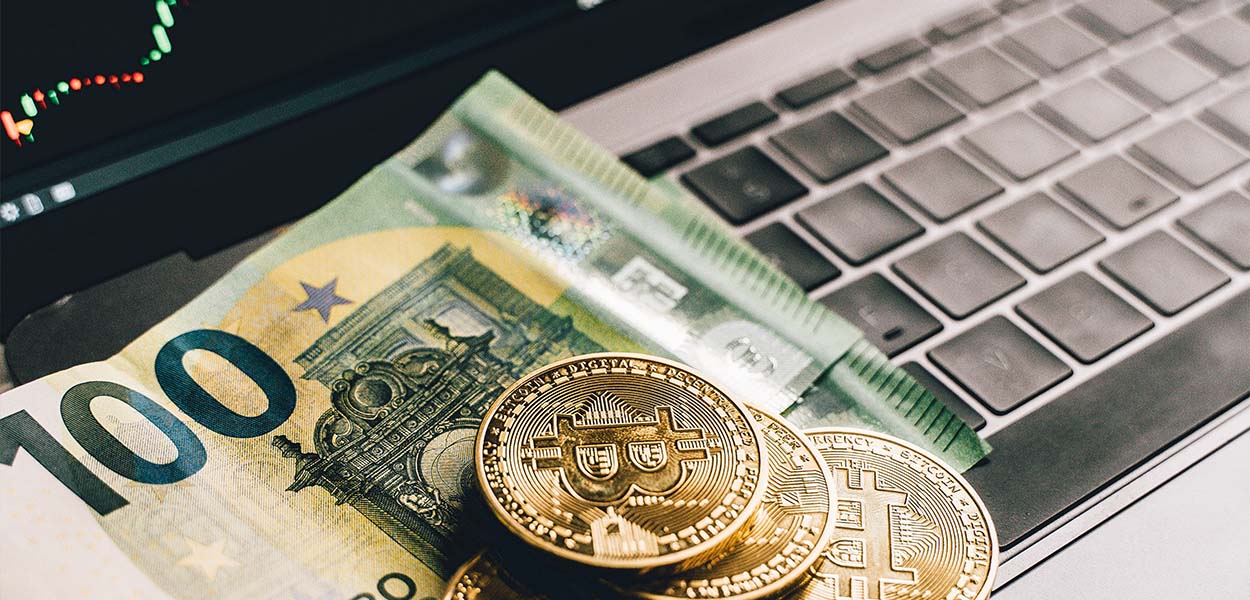Use of Blockchain & Cryptocurrency in Python
Build a blockchain and cryptocurrency using Python
February 10, 2023 4:28 PM
Use of Blockchain & Cryptocurrency in Python
February 10, 2023 4:28 PM

Web3 is the most delinquent buzzword in the world of technology. Web3 is based on the concept of a decentralised web, which is mostly built with blockchain. It has been around for a while now and came into the limelight because of Bitcoin. Many get confused with the terms bitcoin and blockchain and believe them to be the same, but bitcoin is the best performance of blockchain technology.
A blockchain is a kind of decentralized database that is immutable, persistent, and tamper-proof and that collects data as blocks encrypted using hashing algorithms. The benefit of blockchain technology is that any kind of data can be stored in it, but it is mainly used to store transaction details and acts as a digital ledger. The concept of a decentralized architecture in both Web3 and blockchain makes sure that the information is not owned by a single person or a commodity, which has been the downside of Web2.
Each block in a blockchain is exceptional and contains a hash value, which can be utilized for determining each block. Fingerprinting is the image used for linking blocks on a blockchain. As new alliances keep getting added to the end of the blockchain, the hash of the penultimate block is used to create the hash for a new block, which makes the blocks in the blockchain tamper-proof.
In this article, we will be making a simple blockchain in Python that will hold some text input from users. The blockchain technology employed in the industry is far more complicated than the one that we will be discussing in this article, but this is enough to comprehend blockchain technology from an execution perspective.
Index: This is an auto-incremented digit used to identify a block in the blockchain.
Sender: The user who made the block on the blockchain.
Timestamp: The time at which the block was made
.Previous hash: The hash value of the preceding block in the chain. This is useful in confirming the goodness of a blockchain by fingerprinting and linking the blocks in the blockchain.
Hash—This is a hash developed using all the above-mentioned properties present in a block. This property uniquely determines a block in a blockchain.
Nonce—This is a number that assists in making the hash as per the difficulty level set for the blockchain.
The first block of a blockchain is named the "genesis block." From the above description, it can be deduced that the preceding hash cannot be removed from the blockchain as the blockchain is empty. In such a case, the preceding hash is developed using some secret set by the inventor of that blockchain. This confirms that all the blocks in a blockchain have a matching structural schema. Each blockchain has a problem level associated with it. It limits the number of digits that ought to be 0 in the hash. To meet this condition, we have the nonce effect, which is a whole digit that assists in developing the hash with a limited number of preceding zeros.
Since the hashing algorithm employed in most blockchain technology is SHA256, it is almost inconceivable to find the nonce by pre-calculating the hash value. Trial-and-error is the only way to estimate the nonce, which makes it computationally costly and time-consuming. We must run a for loop to compute the nonce value.
The method of thinking about the nonce that causes the hash as per the needs is called blockchain mining, which is computationally costly and time-consuming but is required to add a block to the blockchain. We will set the difficulty level to 4 for our blockchain, so the first 4 letters of each hash should be "0000." For mining bitcoin, the test level is set to 30, and mining each block in bitcoin approximately takes 10 minutes.

We will describe a class called blockchain with two effects, namely blocks, and secrets. The block effects will store all the blocks on the blockchain, while the private variable will be utilized for making the last hash for the genesis block. We will describe three functions, namely create_block, validate_blockchain, and show_blockchain. The create_block process will be utilized to make a new block and append it to the block's effects in the blockchain.
The effects of each block explained before will be executed here. The nonce that meets the blockchain's need of having four zeros foregoing each hash will be computed. The validate_blockchain function will be employed to validate the goodness of the blockchain. This suggests that it will check the fingerprinting on each block on the blockchain and inform us if the blockchain is sound or not. Each block should have the correct hash of the last block. If there are any differences, it is secure to believe that someone has meddled with the blocks on the blockchain. This property makes blockchains firm and tamper-proof. Ultimately, the show_blockchain function will be utilized to show all the blocks on the blockchain.
Now that we have made the blockchain class, let's use it to make our blockchain and add some obstructions to it. I will add 3 blocks to the blockchain, validate the blockchain, and eventually print the blocks and look at the result.
We can see the block's current location on the blockchain and that the validate_blockchain process returns true. Now let's meddle with our blockchain, add a new block somewhere between the blocks of the blockchain, and run the validate_blockchain function to see what it produces.
We can notice that the validate_blockchain function returns wrong because there is some mismatch in the fingerprinting; hence, the integrity of our blockchain has been compromised.
To continue this project, the blockchain can be hosted and deployed as a REST API server on the cloud that can be utilized by the users to store data on the blockchain. Obviously, our blockchain is not allocated for the sake of clarity.
If you are interested in using blockchain technology for your database, feel free to look at BigchainDB, a decentralized blockchain database. It delivers support for both Python and Node.js. Alternatively, GunDB is a popular graph-based, decentralised database engine being used in web3 applications in recent times.
To create a blockchain in Python:
Create a block class.
Define the blockchain.
Encrypt each block with a cryptographic hash function to ensure immutability.
To protect against hackers, include a proof-of-work method.
Build an interface or API that multiple users or nodes can use to interact with the blockchain.
They can use Python to code a blockchain without having to write a lot of code. To illustrate, Python allows the creation of a simple blockchain in less than 50 lines of code. However, Python is recommended for blockchain because you can easily perform many tasks with a single command.
There is no doubt that blockchain coding is not easy. It requires a lot of technical expertise and knowledge to be able to code a blockchain. However, many resources are available to help people learn how to code a blockchain.
There is currently a high demand for blockchain developers, leading to the potential for higher salaries. Overall, it can be a very profitable and secure career choice to become a blockchain developer.
Strategy
Design
Blockchain Solution
Development
Launching
Testing
Maintenance
Contact US!

Plot 378-379, Udyog Vihar Phase 4 Rd, near nokia building, Electronic City, Phase IV, Sector 19, Gurugram, Haryana 122015
Copyright © 2025 PerfectionGeeks Technologies | All Rights Reserved | Policy
Contact US!

Plot 378-379, Udyog Vihar Phase 4 Rd, near nokia building, Electronic City, Phase IV, Sector 19, Gurugram, Haryana 122015
Copyright © 2025 PerfectionGeeks Technologies | All Rights Reserved | Policy